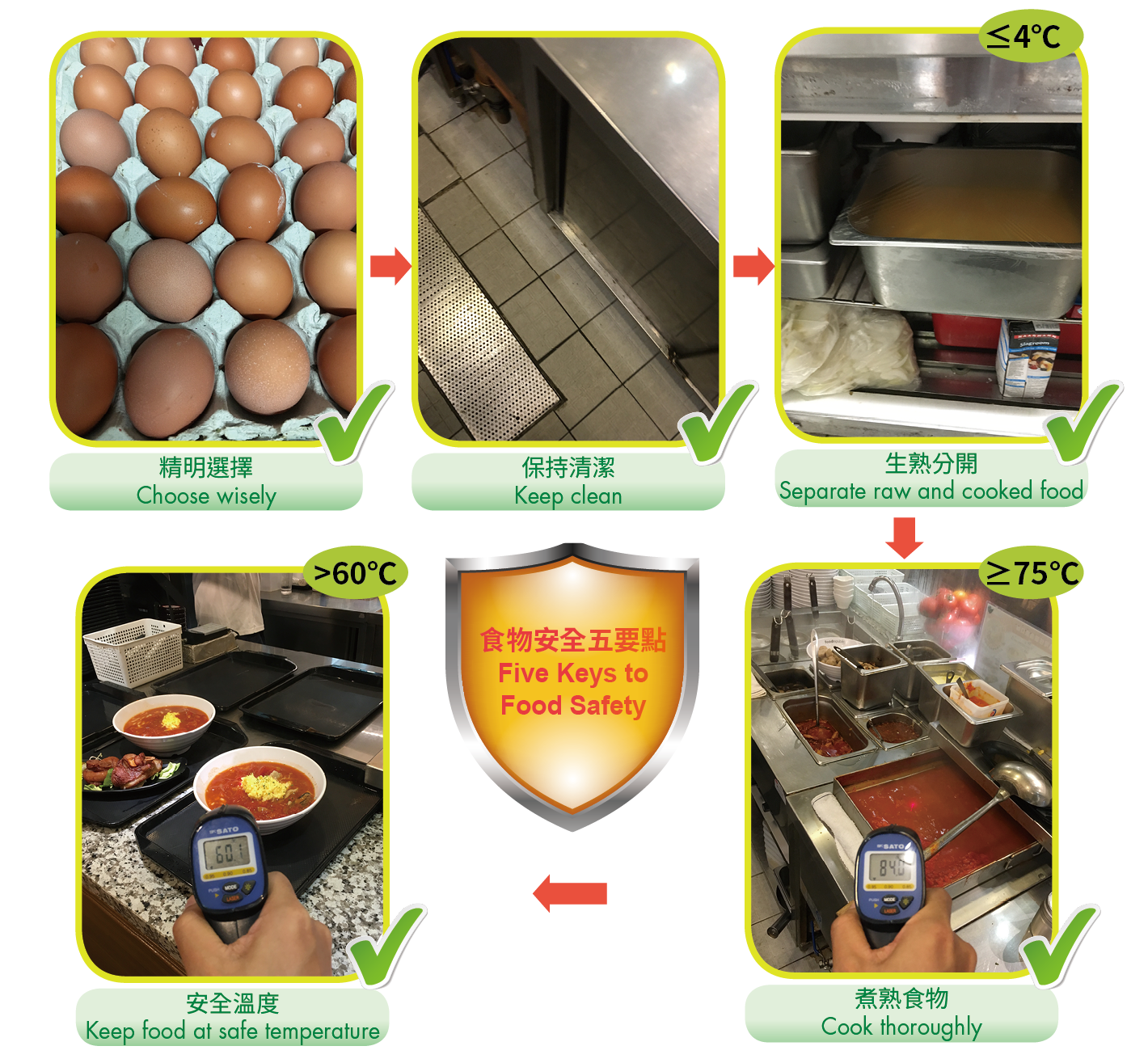
Food Safety Focus (156th Issue, July 2019) – Incident in Focus
Food Poisoning Caused by Salmonella in Soft-scrambled Eggs at Improper Cooking and Holding Temperature
Reported by Mr. Kenneth YIP, Scientific Officer
Risk Communication Section, Centre for Food Safety
In May and June 2019, two food poisoning outbreaks involving 7 and 40 victims respectively related to the consumption of soft-scrambled eggs were reported. The victims suffered from abdominal pain, vomiting, diarrhoea and fever after consumption of soft-scrambled eggs with either rice and pasta. Some victims required hospitalisation. Similar food poisoning cases were also reported in 2017 and 2018.
These cases were caused by inadequate cooking and/or improper holding temperature of scrambled eggs after cooking whereas Salmonella was the causative agent. Field investigation of some cases found that semi-cooked scrambled eggs were kept in room temperature for prolonged period. No further reheating was conducted before they were being served. These food incidents highlight the food safety risk of consuming scrambled eggs without proper heat treatment and storage condition. This article discusses the source of Salmonella in eggs, the foodborne illness caused by consuming undercooked eggs and ways to minimise the risk.

Undercooked egg dishes such as soft-scrambled eggs have an inherent risk of food poisoning caused by Salmonella.
What is the Source of Salmonella? The Hen or the Egg?
Salmonella infects hens and contaminates the eggs. Eggs can be contaminated by Salmonella through eggshell penetration from contaminated faeces during or after laying eggs. Salmonella can also originate from the infected reproductive organs and contaminate the egg before the shell is formed. It is not possible to distinguish contaminated eggs from normal eggs by naked eyes.
Risk of Consuming Undercooked Eggs
Salmonella causes food poisoning and can survive in undercooked eggs. In addition, improper storage temperature (eg. room temperature at 25°C) will also facilitate Salmonella in undercooked eggs to multiply rapidly. The incubation period is around 6 to 72 hours, usually 12 to 36 hours. Symptoms include abdominal pain, vomiting, diarrhoea and fever. For severe cases, though uncommon, complications such as septicaemia and dehydration and even death may occur.
Implementing the Five Keys to Food Safety to Reduce Food Poisoning
As food poisoning caused by Salmonella in egg dishes are related to improper cooking and holding temperature, particular attention should be paid to whether the food is full cooked and kept at proper temperatures. The Five Keys to Food Safety can be adopted to prevent foodborne diseases, which include (1) Choose wisely; (2) Keep Clean; (3) Separate raw and cooked food; (4) Cook thoroughly; and (5) Keep food at safe temperature.
Thorough cooking and heating can destroy bacteria including Salmonella. Foods should be cooked to a core temperature of at least 75°C. Cooked foods that are served hot should be kept at above 60°C prior to serving, while cold dish should be kept at 4°C or below. Moreover, cooked foods should be consumed immediately and not be left under room temperature for more than 2 hours. If cooked food is kept at room temperature for more than 4 hours, it should be discarded.

Example of preparing egg dishes by following the Five Keys to Food Safety.
Key Points to Note:
- Salmonella can contaminate eggs during egg formation. It is not possible to distinguish contaminated eggs from the normal ones by naked eyes.
- Salmonella can survive in undercooked food. It is risky to consume raw or undercooked egg dishes.
- By following the Five Keys to Food Safety, the risk of suffering from foodborne illness can be minimised.
Advice to Consumers
- There is an inherent risk of Salmonella contamination in undercooked egg dishes.
- Choose dishes prepared by pasteurised eggs, egg products or egg powder.
- High risk groups including pregnant women, young children, the elderly and immunocompromised persons are advised not to consume raw or undercooked egg dishes.
Advice to the Trade
- Follow the Five Keys to Food Safety to ensure the food is thoroughly cooked and properly kept.
- Prepare scrambled eggs on a per-order basis and avoid leaving them under room temperature for a prolonged period of time.
- Avoid using cracked eggs in preparing dishes since they are more likely to be contaminated.
- Use all pooled liquid egg on the day of pooling and avoid topping up by new eggs.
- Use pasteurised eggs for food without heat treatment.
- Indicate the presence of raw or undercooked foods/ingredients in ready-to-eat items to help consumers make informed choices by providing a consumer advisory on labels or placards stating, for instance, “Consuming raw or undercooked foods may cause illness, especially for pregnant women, young children, the elderly and people with weakened immunity.”

